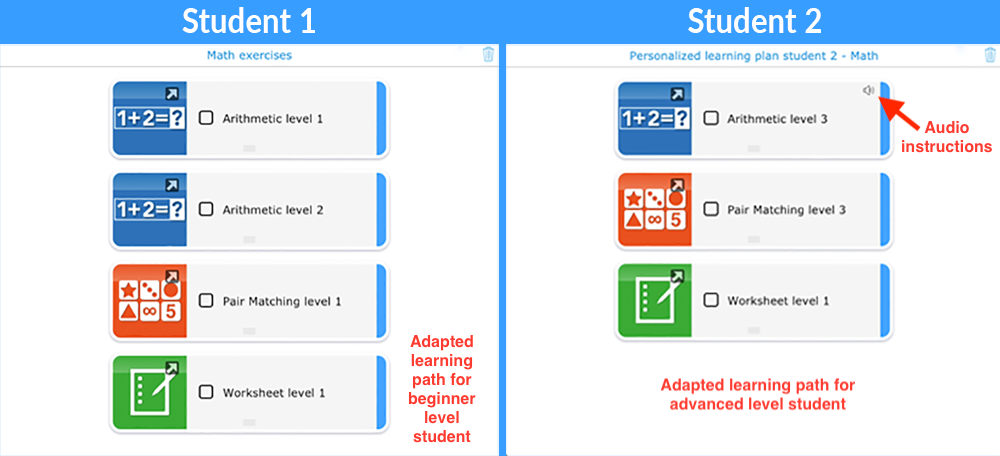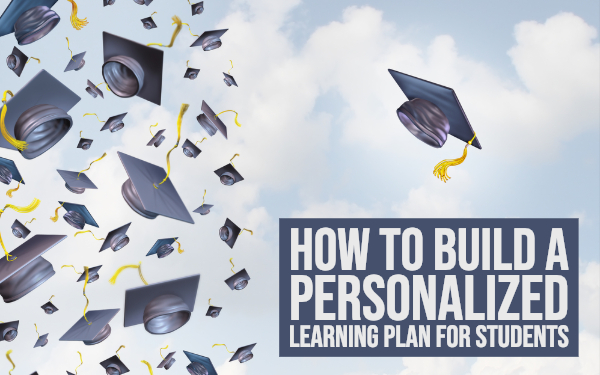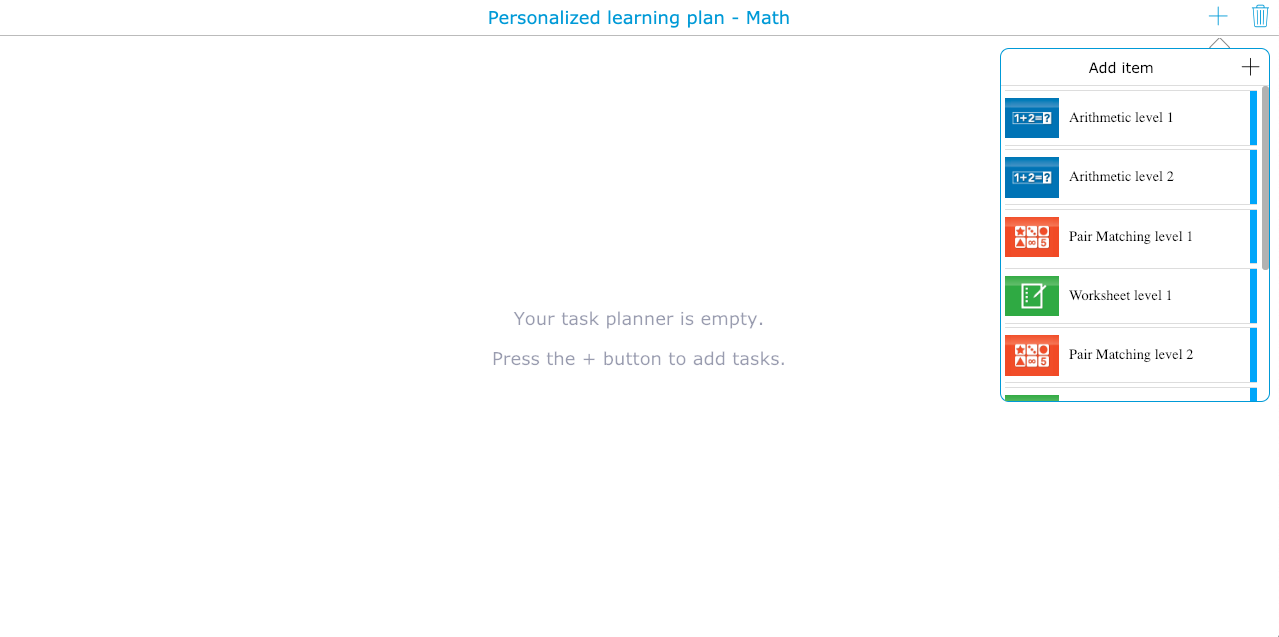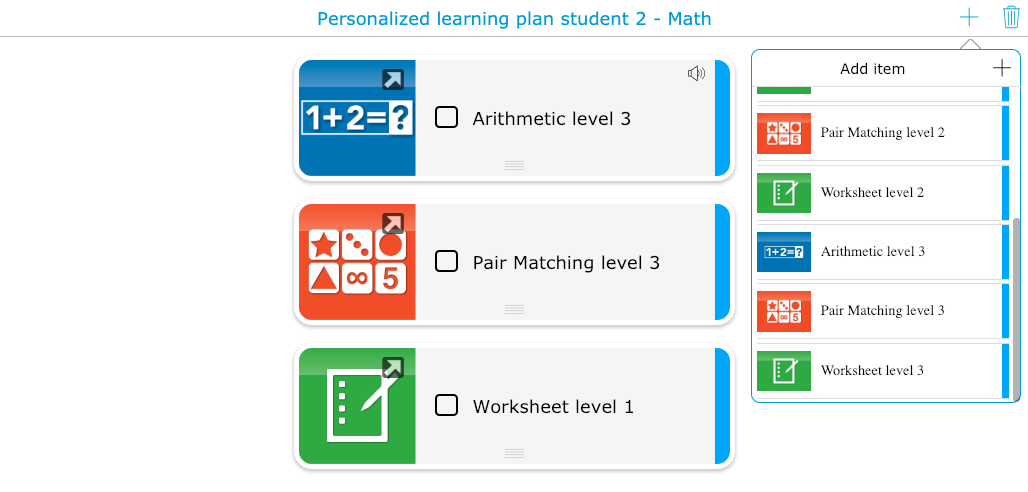How to build a digital personalized learning plan for students
 Lucie Renard —
Lucie Renard —
Everything around us is becoming more and more personalized at an incredible pace. In this evolving world, everything is tailored to our interests and past behaviors.
Here are a few examples:
- You can order a cappuccino with your face printed in the cream.
- A (student’s) smartphone is the ultimate personal(ized) computer.
- Factories churn out shoes, bags, sunglasses and everything else made to order.
Personalization is a trend that will have an overwhelming impact on many aspects of our daily lives.
In this blog post I’ll explain what a personalized education looks like today. I’ll show you how you can build a personalized learning plan with educational technology, more specifically, with BookWidgets.
Let’s get started!
What is personalized learning in the classroom?
If you’re a teacher, you probably feel the effects of the change that comes with this personalization trend. Parents and students expect (and in some cases, demand) a personalized treatment. They are expecting teachers and schools to compensate for learning disabilities or other issues their kids may have.
As a teacher, you have to tailor your assignments and exercises to the student’s needs. You have to differentiate all the time.
Students need to have the possibility to work at their own pace. Fast students need extra exercises, and students who don’t get the lesson subject need to have some remediation exercises. Students with dyslexia should get a spelling checker, and students with dyscalculia need to have the option to use a calculator. And what about students that can’t read very well? Maybe you have to add some instructions via a voice-recording, so students can just listen?
Personalized learning technology makes it possible for teachers to apply adaptive learning in their classroom.
Personalized learning plan examples
All personalized lesson examples I’m about to show you are made with BookWidgets, a content creation tool for teachers. teachers can choose between 40+ different digital template exercises (Quiz, crossword, timeline, worksheet, bingo,…) and fill them with their own content.
Use the BookWidgets planner and set up a personalized lesson plan for your students. This digital exercise allows the teacher to predefine a task list for students. You can insert other widgets or exercises for each task. Students can click on it and another exercise will open. It’s basically a checklist your students have to complete.
There are a few ways to use this learning “Planner”:
- Give the student a complete planner to start with. They just have to make the initial tasks you give them.
- Predefine a task list without initial tasks. That way, the student’s planner will be empty at first. He or she can add their own tasks (or exercises) out of the teacher’s predefined task list.
- Give students a task on their planner to start with, and give them the possibility to add more tasks. To do so, you have to set some initial tasks and predefine a complete task list as well. Students will choose exercises or new tasks out of that task list.
1. Personalized lesson plan with initial tasks
In this personalized learning path/plan, the teacher gives each student some initial tasks to start with.
Here’s an example:

The examples above are two personalized learning paths for two different students. You can see some differences.
The first student has to get the basics first. Click here to check out his planner and exercises. Click on the icons to open the exercises and on the black arrow in the upper left corner to go back to the planner.
The second student is a student that already knows the basics well, and can handle exercises that are more advanced. Click here to see the second planner. Click on the icons to open the exercises, and click the black arrow in the upper left corner to go back to the planner. Here, the teacher added some audio instructions. Click on the audio icon the listen to the instructions.
2. Personalized lesson plan with a task list
In this example, the teacher chooses to predefine some tasks that students can choose from. This means that students choose their own learning path. They can estimate their own learning level and select the exercises that are right for them.
The learning planner will be empty to start with. Students have to click on the “+” in the upper right corner and start adding new exercises you are suggesting.
3. Personalized lesson plan with initial tasks and a task list
When you give your students an initial task list they have to complete, it’s also possible for your students to add extra exercises when they are done. At least, if you defined an extra task list. Again, here, they just have to click on the “+” in the upper right corner and choose new exercises.
Click on the image below to take a look at this personalized student planner. Add some new exercises yourself.
With the BookWidgets planner, you can easily create one predefined task list as a standard planner. Make a copy of this standard planner widget and make some changes for different students. Every student can have different initial tasks on their planner than other students.
Use the planner to stimulate independent learning
You can also use the planner widget to encourage independent learning. Give them BookWidgets exercises that succeed each other in the planner widget. Students go over them independently, and check the exercises they have completed.
That’s it! I really hope this BookWidgets planner makes it easier for you to personalize learning and to meet your student’s needs. If you need help figuring this out, just reach out to the BookWidgets team. You can start building a personilazed planner right now:




